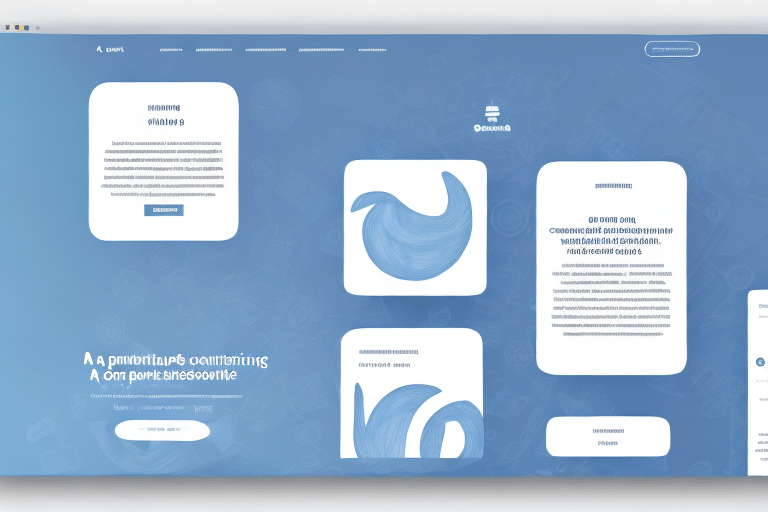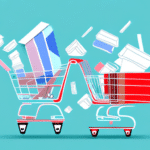How to Create a Product Page That Converts: A Step-by-Step Guide
If you’re running an ecommerce business, having a product page that converts is essential. A high-converting product page can significantly boost your revenue and attract more customers. This guide provides a comprehensive, step-by-step approach to creating an effective product page that maximizes conversions.
1. Understanding the Importance of a High-Converting Product Page
A product page that effectively converts leads is vital for the success of your ecommerce business. A well-designed product page can:
- Drive sales and increase revenue
- Enhance customer confidence and trust
- Encourage repeat business and customer loyalty
Conversely, a poorly designed product page can result in lost sales and damage your brand’s reputation.
Key Elements of a High-Converting Product Page
- Clear Product Descriptions: Provide informative and concise descriptions highlighting key features and benefits.
- High-Quality Images: Use clear, well-lit images showcasing the product from multiple angles.
- Effective Call-to-Action (CTA): Incorporate prominent and compelling CTAs to guide customers towards making a purchase.
2. Researching Your Target Audience
Understanding your target audience is the foundation of creating a product page that resonates with potential buyers. Effective audience research includes:
Demographics and Psychographics
Analyze the age, gender, location, income level, and interests of your audience. Tools like Statista provide valuable demographic data.
Customer Motivations and Preferences
Identify what motivates your customers to purchase. Surveys, feedback forms, and market research reports can offer insights into customer preferences and buying behavior.
3. Crafting Compelling Product Titles and Descriptions
Your product title and description are critical in capturing the attention of potential customers and improving search engine visibility.
Optimizing for SEO
Incorporate relevant keywords naturally into your titles and descriptions to enhance SEO. Utilize tools like Moz for keyword research.
Benefit-Driven Content
Focus on the benefits and unique features of your product. Clearly communicate how the product solves a problem or adds value to the customer’s life.
4. Optimizing Visuals and Enhancing User Experience
Visual elements and user experience play a significant role in converting visitors into customers.
High-Quality Images and Videos
Ensure that your product images are high-resolution and provide multiple views. Incorporate product videos or 360-degree views to give customers a comprehensive understanding of the product.
Page Loading Speed
A fast-loading page improves user experience and reduces bounce rates. Use tools like Google PageSpeed Insights to optimize your page speed.
Mobile Optimization
With over 50% of ecommerce traffic coming from mobile devices, ensure your product page is mobile-friendly. Responsive design and mobile-specific features can enhance user experience on smaller screens.
5. Incorporating Trust Signals and Social Proof
Building trust with your customers is essential for increasing conversion rates. Incorporate various trust signals and social proof elements on your product page.
Customer Reviews and Ratings
Display authentic customer reviews and ratings to provide social proof. Positive reviews can significantly influence purchasing decisions.
Trust Badges and Security Seals
Include trust badges from recognized security companies to assure customers that their transactions are secure. Examples include SSL certificates and payment security badges.
Industry Certifications and Awards
Showcase any certifications, awards, or recognitions your product has received to enhance credibility.
6. Effective Calls-to-Action and Streamlined Checkout Process
A clear and compelling call-to-action (CTA) encourages customers to take the desired action, while a streamlined checkout process reduces friction and cart abandonment.
Designing Effective CTAs
Use action-oriented language and ensure your CTA buttons are prominent and visually appealing. Phrases like “Buy Now,” “Add to Cart,” or “Get Yours Today” can prompt immediate action.
Simplifying the Checkout Process
Minimize the number of steps in the checkout process. Offer guest checkout options, multiple payment methods, and clear instructions to make the process seamless. Tools like Shopify Payment Gateways can provide flexible payment solutions.
7. Analyzing and Improving Product Page Performance
Continuous analysis and optimization are key to maintaining and improving your product page’s performance.
Using Analytics Tools
Utilize tools like Google Analytics to track key metrics such as conversion rates, bounce rates, and average time spent on the page.
A/B Testing
Conduct A/B testing to determine which elements of your product page are most effective. Test different headlines, images, CTAs, and layouts to identify what works best for your audience.
Monitoring Key Metrics
Regularly monitor metrics like bounce rate and average session duration. A high bounce rate may indicate issues with page load speed, design, or content relevance.
8. Common Mistakes to Avoid
Be aware of common pitfalls that can negatively impact your product page’s performance.
Avoiding Overcrowded Designs
Keep your product page clean and organized. Avoid cluttering the page with too much information or too many visuals, which can overwhelm visitors.
Ensuring Mobile Optimization
Failure to optimize for mobile can lead to a poor user experience and lost sales. Ensure that your mobile design is intuitive and easy to navigate.
Neglecting SEO
Don’t overlook the importance of SEO. Without proper optimization, your product page may not rank well in search engine results, reducing visibility and traffic.
9. Innovative Strategies for Boosting Conversions
Implementing innovative strategies can give your product page a competitive edge and further increase conversion rates.
Augmented Reality (AR) Integration
Use AR technology to allow customers to visualize products in their environment. This can enhance confidence in purchasing decisions, especially for items like furniture or home decor. For example, IKEA uses AR in its app to let customers see how furniture would look in their homes (IKEA AR App).
Personalized Recommendations
Leverage data to provide personalized product recommendations based on customer behavior and preferences. This can increase the likelihood of additional purchases.
Real-Time Inventory Updates
Displaying real-time inventory levels can create a sense of urgency and encourage customers to make a purchase before the product runs out.
10. Leveraging Tools and Resources for High-Converting Product Pages
Utilize various tools and resources to enhance your product page’s effectiveness and performance.
Landing Page Builders
Tools like Unbounce and Leadpages offer customizable templates and features to create optimized landing pages.
Web Analytics Tools
Use analytics platforms like Google Analytics and Hotjar to gain insights into user behavior and preferences.
A/B Testing Software
Platforms like Optimizely and VWO facilitate A/B testing to optimize different elements of your product page.
By implementing these strategies and continuously optimizing your product page, you can create an engaging, trustworthy, and efficient environment that converts visitors into loyal customers. Stay updated with the latest trends and technologies to maintain a competitive edge in the ever-evolving ecommerce landscape.






















